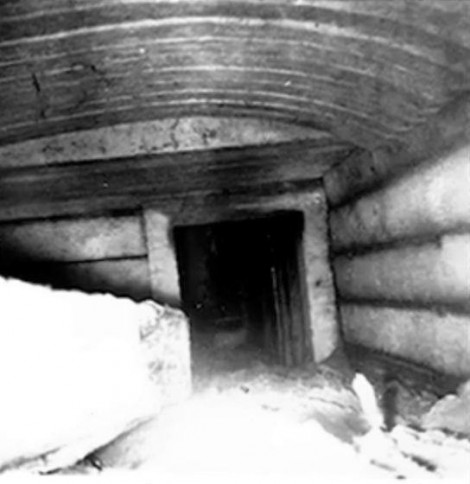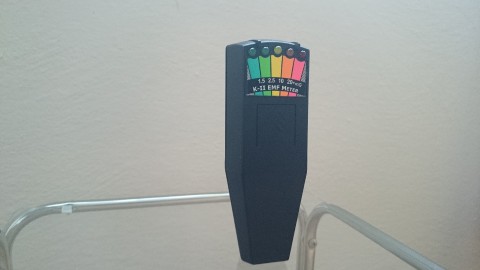Case No. 16 | Orts near České Budějovice (2017)
When the Paranormal tým z.s. started in 2013, we were already confronted with the Orthos underground through tips from fans. Unfortunately, the technology at the time did not allow us to explore the underground as objectively as we would have liked. And so here we are in 2017. Finally, we can describe to you what the research in this intricate network of corridors was like, what it brought and what risks it entailed.

history
The history of the Orts is primarily linked to the history of the Hardtmuth company, which built the kaolin mine in the second half of the 19th century. The aim was simple.... to obtain kaolin for their ceramic products, because in 1846 the company moved from Vienna to České Budějovice. Having a supply of kaolin just a few kilometres from the company was therefore economically advantageous.
However, the kaolin used for ceramics from the Orty mine was not ideal. The products were more brittle and yellowish in colour. It was therefore decided not to use the kaolin for ceramics and instead to use it for the production of the famous pencils. However, it did not work here either, and so all mining ceased. As time went on, small entrepreneurs mined the local kaolin for smaller periods of time, but by then the era of Orta as a mining site was fading and the First Republic saw its definitive end.
The secrecy about Orti was during the Second World War. According to some accounts, a sort of shelter was to be built there at the very end of the war.1 This information has recently been updated. As Jan Ciglbauer, an expert on this topic, told us on our FB page, there really was a shelter in Orty. However, it was built in the 1950s and existed at least in 1962, when the photo below was taken.

beginning of research

For our entrance to the Orthos we choose one of the sinkholes called Hiroshima, where the soil has collapsed into the corridor space, creating an entrance that is very narrow and slippery at times of higher humidity.
We were "lucky" enough to have to slip in with our equipment, which came at the price of getting dirty with clay.
After the narrow hatch - the sinkhole - the corridor widens in the dark. About one and a half metres wide and three metres high. The vaulted parabolic ceiling gives the impression of some mysterious temple or church nave. The walls show traces of handwork, where the passages were cut with fangs.[2]
Today this corridor is decorated with various engravings of greater or lesser artistic value. However, we are not following it this time. Our first destination is the Charoon sinkhole. It is an area where a network of passages branches into several blind passages. However, after the floods of 2002, there was a sinkhole here that created an oval natural dome, which will one day also loosen and create another sinkhole in the ground above it, similar to the one we entered through. Today, the perimeter of this dome is bordered by clay impressions of human hands. This makes the space almost mystical and, moreover, very well soundproofed. Sounds are minimal and unconfirmed reports suggest that groups of people have held séances here in the past.

Therefore, we unpack the equipment and perform electromagnetic field measurements. This shows us various types of constant deviations, which, for example, we did not observe in the Josefov underground. Later on, we are told by Matěj Pudich, a person who comes here frequently, that measurements for radioactivity were made here for some reason. Rationally, if these measurements had some valid reason, it is possible that the fluctuations in the electromagnetic field here may have had these causes as well.
Other than the constant fluctuations in the electromagnetic field, we're not detecting anything else. After an hour or so, we move to another area of the Orts called the Cellar. This is an alcove carved into the wall of the corridor, where several people can fit and sleep.
We can see that this area is frequently visited in the garbage present here (mainly burnt out candles), and also in the various texts with the rules of the games that groups of people played here.
It is here that the next phase of the research is carried out, which yields interesting electromagnetic values compared to the results we have from the Charon corridor. In fact, in Pivnica, all the electric field values are normal. That is, at a maximum deflection value of 0.3 MilliGauss. We note that these are values measured with mobile devices switched off, which would have no use in Orty anyway, as the signal does not reach the corridors themselves.

What do the measured values of the electromagnetic field mean?
Electromagnetic fields are ubiquitous. And it shows some variation everywhere, depending on the environment and the type of (e.g. electronic) activity or solar activity.
In an environment that exhibits maximum deviations of 0.3 MilliGauss to 3 MilliGauss, for example, there is minimal risk of health problems even if you stay in such an environment for a long time. However, if these deviations are 20 MilliGauss or more (constant proximity to transmitters, switched-on mobile phones, etc.), there is a risk that this radiation may have a negative impact on human health in the form of, for example, certain types of cancer (leukaemia[3] is mentioned), lower immunity, stress conditions without objective cause, headaches, etc.
Therefore, it is interesting that in a field of about 500 meters underground the electromagnetism is different by a few tenths of MilliGauss. Although none of the measured fluctuations in the electromagnetic field pose a health hazard to humans, rationally all values should be identical in such an environment.

legends
Like any mysterious place, Orty has its own mysterious stories. Two incidents in particular are among the most famous. The first is connected to the end of World War II, when several German soldiers were shot at the entrance to Orty. The event has a real basis, as it is confirmed that on 9 May 1945, a German soldier, Stepan Mettman, was shot on the road of nearby Hosín while fleeing from the Red Army, which shot him here.
A boy, who was ashamed of his school report, was supposed to have committed suicide right inside Orty. He tied a rope to a hook that had previously been used to hang kerosene lamps and hanged himself.[5]
Conclusion of the research, Severní rozrážka
The last stop for our research is the so-called Severní rozrážka <Northern Rift>. That is, the end of the corridor we descended into after the fall of Hiroshima, decorated with various artistically carved figures and shapes.
It is here, during the move, that we record on a dictaphone a voice which, when analysed, belongs to none of us and therefore should not rationally exist. However, the fact that it is not understood reduces its validity and thus we judge that it may also rationally be (for example) a movement that the dictaphone has recorded in sound, which our brain renders as a possible unidentifiable voice. More in the attached video... https://youtu.be/RkvY4Y8uL1A?t=20m57s
Similarly to the Charon corridor, we also notice stronger fluctuations in the electromagnetic field, which we record on our camera. The Mel Meter instrument in particular is proving to be useful for this research.
After packing up all the meters and recording devices, we claw our way back to the surface on the slippery surface. Previously clean clothes now shine with clay highlights, and we leave in this state for our headquarters, where we then conduct the deeper analysis that we then used for this article and documentary.
The Ort Underground is one of the very interesting sites that teases the courage of many visitors, and which is like a revelation from another time. Although we did not experience downright horror situations here, we admit that the charm of these corridors has its mysteriousness. A mystical atmosphere that is worth a visit.
Still, for safety reasons, we don't recommend a visit to Orthos. The drop-offs, slippery slopes, unpaved ceilings and many obstacles in the way pose too many risks to your health. So rather, let's try to secure the area first, and then open it up to the public. Because not only the bats being protected, but the very look of the corridors are worth preserving for future generations.
A two-part documentary has been produced from the research in Orty, which documents the course of the investigation and its conclusions in audiovisual form...
Author of the article: Ondřej Bezouška
Proofreader: Kateřina Běhanová
videos of the investigation
- in Czech, without English subtitles

